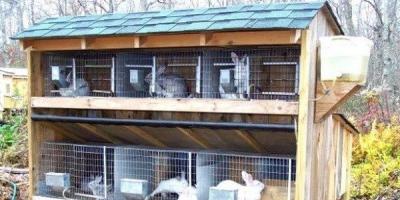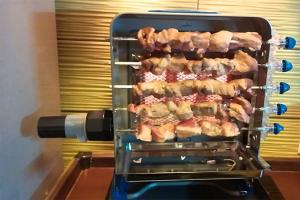Clean forest air, clear river water and fascinating nature attract city dwellers to their dachas. For comfortable living in cottages and small houses far from big cities, it is necessary to provide the benefits of civilization - running water, heating and wastewater disposal.
Moreover, one of the solutions for arranging a treatment system for an autonomous sewage system can be a Bioxi septic tank. It is able to satisfy the needs of both a small family and a cottage village. We will tell you how to choose the most suitable model of the specified brand and how to install it correctly.
Among the many options for collecting and treating wastewater, Bioxi equipment stands out.
These are sewerage installations that process liquid waste from human life processes before their disposal. Dirty wastewater coming through the water is purified and turned into purified, disinfected and clarified odorless water.
Image gallery
The most popular station in the model range. Ideal for out-of-town living for a family of up to five people. You can forget about constant pumping by the machine and the unpleasant smell of sewage.
Special offers
1. Freeze the price for the winter under a responsible storage agreement!
During the winter season, you can fix the cost of the station and installation work at the low prices of the end of 2019, and install the equipment at any time until June 15, 2020*.
*Details about the conditions of the promotion can be obtained from the manager. Limited offer.
2. To everyone who bought and installed a station from us drainage pump as a gift!
3. We provide all our clients discount 5,000 rubles for any additional service, including installation of: water supply, drainage, heating, cellar.
4. Free shipping in the Moscow region within the IBC.
5. Discounts for pensioners on installation work - 10%.
6. Installment plan without overpayments - 0%.
7. Opportunity payment by cards.
Advantages:
If you have not yet encountered BIOXI stations or have not read about them, please consider the information presented below carefully.
Deep wastewater treatment (up to 98%)
Versatility in drainage schemes (discharge into a ditch or into the ground is possible)
Automatic cleaning of station components (here we are one step ahead of our competitors)
Unlike other stations, where the main problem is the often clogged main pump, BIOXI is free from this flaw. This means that you will not have to call the experts or look into the station more often than required by the regulations.
No need for concreting
Ease of maintenance
Specifications
| Station model | STANDARD (2.36 m.) | LONG (3.03 m.) | SUPERLONG (3.53 m.) |
| Number of users, people | up to 5 | ||
| Productivity, m3/day | 1 | ||
| Salvo discharge, l | 250 | ||
| Electricity consumption, kW x h | 0,06 | ||
| Pipe location, m | up to 0.7 | up to 1.3 | over 1.3 |
| Weight, kg | 210 | 235 | - |
| Overall dimensions, m | 1 x 1.17 x 2.36 | 1 x 1.17 x 3.03 | 1 x 1.17 x 3.53 |
| Wiring diagram | download | download | - |
| Cost without flushing system, rub. | 77 350 | 99 450 | 127 600 |
| Cost with washing system (BIOXI-P)*, rub | 86 445 | 108 630 | - |
In case of forced diversion (PR), the stations are equipped with a drainage pump.
* - stations with automatic washing and a container for forced release of treated wastewater.
Installation work
We not only sell BIOKSI, but also install this equipment. We have experienced installation teams ready to carry out high-quality installation with all excavation work or separately connect to communications and put the station into operation.
 |
 |
 |
 |
We carry out the following work:
Installation supervision work (connecting the station to the supplied communications) includes:
 |
 |
1. Connecting the station to the supply pipeline, sealing the junction point
2. Connecting the electrical cable
3. Installation of electrical equipment into the station
4. Station launch
Service
You can carry out BIOXI service yourself, or use the services of our company. The entire procedure takes no more than two hours and allows the system to function without any emergency situations.
Video:
One-time maintenance of the BIOXI-1 station is 4 000 rub.
Like any mechanism, aeration stations require scheduled maintenance to maintain overall performance and the required degree of purification of incoming household wastewater. Since the main users of this type of sewage system are people living in private houses, the design provides for the possibility of carrying out maintenance of Bioxi stations with your own hands.
Here we will take a step-by-step look at the entire process of necessary service work, which will allow you to operate your cleaning station as usual for a long time.
Video:
Before you start cleaning Bioxi with your own hands, you need to know the frequency with which it should be done:
- Once a quarter. With a nominal number of users per day (for example, five users using the Bioxi 5 station) all year round.
- Once every six months. For daily living during the summer season (the first time in the middle of the season, the second, with conservation, at the end of the season).
- Once a year. When staying on weekends during the summer season (with conservation at the end of the season).
Having decided on the frequency of the service, we move on to its step-by-step execution:
1) Remove waste sludge from the activated sludge stabilizer. This can be done in two ways:
A. Using the built-in mamut pump.
With the installation turned off, remove the mamut pump hose from the fixing clip and take it outside the station, remove the plug by loosening the metal clamp at the end of the hose. We turn on the installation in the forward phase ( the float switch in the receiving chamber is forced up). After pumping out about 50% of the volume (about 1 meter of liquid column) of the chamber into a previously prepared container, turn off the installation, attach the plug and fix the hose in its original position.
b. Using a drain pump.
We lower the pump with the hose to the bottom of the sludge stabilizer chamber, lower the end of the hose into a pre-prepared container for collecting sludge or directly into the compost pit. We turn on the pump and pump out about 50% of the volume (about 1 meter of liquid column). We wash the walls of the sludge stabilizer from sediment and fill it with clean water to the original level.
It is best to clean the walls of the chambers using mini high-pressure washers, having previously covered the compressor compartment from water entering it during the washing process.
2) Using a drainage pump, we pump out about 20-30 cm of liquid from the bottom of the aeration tank. We wash the walls of the aeration tank and secondary settling tank from sediments and fill them with clean water to the original level. Remove from the fixing clips and clean the hair collector.
3) We wash the walls of the receiving chamber.
4) Using a net, remove all non-degradable mechanical debris from the station.
5) Disconnect the air hose and the main mamut - the pump that pumps from the receiving chamber to the aeration tank and remove it by removing it from the fixing clip. We wash the Mamut pump from the outside and clean it by applying a pressure stream of water into the pump tube.
6) Disconnect the air hose and the coarse filter, remove it from the fixing clip. We wash the filter from the outside and clean it by applying a pressure stream of water into the filter pipe. We install the coarse fraction filter and the main mamut pump in place, fixing them on clips and connecting them to the air hoses.
In order not to mix up the pump and filter hoses, you should mark them, for example, with electrical tape.
7) Clean the compressor air filter. To do this, unscrew the screw located on the top of the compressor, remove the cover and take out the air filter. Clean the filter by shaking it. We install the filter in place. Similarly, we clean the filter of the second compressor.
If the air filter is excessively dirty, it must be washed in water and reinstalled after drying it.
After completing all the above steps, enable the installation
As you can see, Bioxi can be easily maintained with your own hands. Nevertheless, we strongly recommend that the first service be carried out by specialists, as they say: “It’s better to see once than to read on the Internet a hundred times!”))
The “Bioxi” septic tank treatment plant is part of the autonomous sewage system of dachas, country houses, cottage communities, recreation centers - that is, any residential buildings located away from the central sewer system.
Purpose and types of equipment "Bioxy"
In an aeration tank (septic tank), wastewater is enriched with oxygen from the air, as a result of which aerobic bacteria oxidize water contaminants, making the water clean and suitable for watering or washing a car. During cleaning, the unpleasant odor disappears along with dirt and waste.
The process of aerobic “filtration” is similar to the purification of water in a river, where the liquid is actively exposed to oxygen, and contaminants fall out in the form of sludge. The rate of purification of contaminated water, which is guaranteed by a bioxi septic tank, is quite high - about 98%.
The “Bioxi” septic tank is shaped like a regular refrigerator and is compact in size.
The big advantage of Bioxi systems is the ability to select models depending on their location underground, as well as on the conditions for serving a certain number of people.
One of the indicators is the depth of the pipes. Depending on it, Bioxi treatment facilities are divided into 3 types:
- "Bioxy": pipeline depth - up to 90 cm;
- "Bioxy Long": 90 - 140 cm;
- "Bioxi Super Long": more than 140 cm.
Also, the choice of an autonomous sewer system depends on the number of people living in the house. For example, for a family of 3 people, the “Bioxi – 0.6” model is enough, for a family of 5, “Bioxi – 1”. If a company of 20 people often gathers in the house, the best option is “Bioxi-4”. To service cottage villages, models are provided that can serve up to several dozen people. For example, the septic tank “Bioxi-15” is designed for 75 people, and the “Bioxi-20” is designed for 100 people.
Description of the cleaning technology used
Bioseptic tanks are fundamentally different from simple cesspools and storage septic tanks (with a filtration field) in that they are not a storage system, but a biological purification system - and this is their huge advantage.
The technology of biological wastewater treatment is complex only at first glance. The main functional component is activated sludge, which is involved in the processing of polluted water. There are four phases of exposure to activated sludge:
- Biosorption of organic matter. Duration – no more than 30 minutes. The biomass of sludge increases, the amount of pollution sharply decreases.
- Oxidation of organic substances. Wastewater decarbonization occurs - the oxidation of substances containing carbohydrates under aerobic conditions. The concentration of pollutants continues to decrease, the mass of activated sludge increases. The process lasts about 1 hour.
- Synthesis of cellular substance of sludge. The organic substances remaining in the wastewater are processed using the energy released in phase 2. The duration of the period is about 20 hours.
- Endogenous oxidation of activated sludge. At this stage, the sludge biomass decreases. The process lasts for 2-3 days. Fats that are least susceptible to decomposition are broken down.
Thus, the entire process of wastewater purification takes about 3-4 days.
Advantages of septic tanks from this company
It is not surprising that Bioxi treatment plants have become popular: the list of their advantages is quite large:
- full degree of purification of contaminated waters;
- power is supplied from the electrical network (low power consumption - only up to 20 W per person), additional batteries are not required;
- absence of extraneous unpleasant odors;
- Possibility of installation in small summer cottages; no additional filter trenches are needed;
- automatic control of the sludge level, allowing it to be drained only 2-4 times a year;
- easy installation of a treatment plant that does not require concreting (the propylene body of the septic tank is up to 80 mm thick);
- there are no metal parts susceptible to corrosion in the core;
- automatic flushing system facilitates maintenance;
- systems with a capacity of up to 3 m³ do not require maintenance with a sewage disposal machine;
A compressor made in Japan by Hiblow (or German by Becker) guarantees low noise levels.

To install a “Bioxi” septic tank on a site, you need to allocate a small area of free territory
Separately, it should be said about the benefits of maintenance. Usually, the maintenance of the structure is remembered after 3 months, when the need to pump out sludge arises. To remove it, only an air pump is needed. You can clean it less often, once every six months - but with the help of an electric pump. At the same time, clean the walls of the sump. The compressor diaphragms should be replaced once every two years. Once every five years, clean the secondary chamber and surge tank from mineral deposits - only if necessary. Every 10 years, parts responsible for aeration are replaced, but only if they are damaged. Thus, septic tanks are rarely serviced, which saves time.
Identified equipment deficiencies
It is difficult to find any shortcomings in Bioxi septic tanks - in terms of their quality of wastewater treatment, they are superior to all Russian analogues. Moreover, the structures underwent special tests under the supervision of the Research Institute of Human Ecology and Environmental Hygiene named after. Sysin, have permits. But there are nuances that should be taken into account:
- It is necessary to regulate the amount of waste from washing machines. In the presence of fecal drainage, the system copes well with drainage from dishwashers and washing machines, but it is not recommended to use the structure specifically for a laundry - there is not enough activated sludge.
- When operating systems seasonally, special preparation for winter is required. It depends on whether the equipment is disconnected from the electrical network. When the network is working, there will be small costs for electricity (about 50 rubles per month for Bioksi-5). If it is turned off, the water should be pumped out, the equipment should be insulated, and in the spring it will have to be put back into operation.
- To connect two objects to the system (for example, a house and a bathhouse), you should initially connect both pipelines into one.
- In the presence of clay soil, purified water should be discharged not into an absorption well, but into a storm drain.
- During a power outage, the installation operates without additional cleaning, that is, like a regular septic tank.
At the request of the SES, the distance from the treatment plant to the house must be at least 5 meters.

The diagram clearly shows how you can use a “Bioxi” septic tank for watering a lawn or beds
As you can see, the listed points cannot be called disadvantages; these are only features of the equipment that should be paid attention to. Bioxi treatment facilities are fully adapted to the climatic conditions of Russia, thoroughly tested and can last for decades. Considering their environmental focus, we can say that septic tanks like “Bioxy” are the future of treatment facilities.
The purification process in BIOXI stations occurs due to the interaction of wastewater with activated sludge - biomass of various types of microorganisms and protozoa involved in biochemical breakdown, and simply eating organic pollutants and many inorganic compounds, which contributes to the deep purification of wastewater. Such treatment allows, without violating sanitary standards, to discharge treated wastewater after BIOKSI stations onto the terrain.
Let's consider the operation of the station in more detail:
First of all, sewage flows into the receiving chamber (2), where it is mixed and large mechanical inclusions are split. This happens due to the process of intensive aeration - saturation of the liquid with oxygen, in this case due to the supply of air oxygen by a membrane compressor to the aerator (3).
Side view
Next, the already prepared wastewater, through a filter of large fractions (5), which retains undissolved organic waste and inorganic debris, through the main airlift - a pump operating on the principle of squeezing out liquid by air pressure (7), enters the next chamber, called the “aeration tank” (8), where the concentration of working activated sludge is maximum due to constant and intense fine-bubble aeration. In the Aerotank there is a buried secondary settling tank (abbreviated SVO) (9). Moreover, the aerator of the aeration tank is located on one side, which allows, in the presence of a water treatment plant, to ensure the movement of treated wastewater with activated sludge in a circle, intensifying the cleaning process. When part of the purified water with activated sludge moves downwards, the oxygen concentration in the water decreases, the process of denitrification (reduction of nitrites and nitrates to gaseous nitrogen) intensifies, the resulting nitrogen bubbles are easily separated from the sludge particles due to water circulation.
After the denitrification zone, part of the water, passing through the water treatment area, is separated from the sludge and flows through the outlet pipe of the buried secondary sedimentation tank (14) into the outlet tank (15). From the outlet tank, purified wastewater is removed from the station by gravity or forcibly using a drainage pump through the outlet pipe( 25).
Excess activated sludge from the aeration tank is pumped by an airlift (22) into an activated sludge stabilizer (19) with a large-bubble aerator (20), where it accumulates and stabilizes under aerobic conditions. Heavier sludge settles to the bottom of the tank, and water with a small amount of small particles of activated sludge flows through a small vertical settling tank through the overflow pipe (23) back into the aeration tank and continues to participate in the purification of incoming contaminated water.

View from above
BIOXI cleaning systems are equipped with an automatic flushing system and have a flushing pump (17) located in the outlet tank (15) and controlled by a control unit timer (16). The pump is connected to the distribution pipeline of the automatic washing system (18), to which in turn are connected: the main airlift (7), the activated sludge recirculation airlift (22), the denitrification zone washing injector (13), and the SVO film breaker (11). Also, while the pump is operating, the outlet pipe of the air cooler (14) is flushed, and through it the air cooler itself is flushed. During the process, the liquid level in the aeration tank and, accordingly, in the air tank increases. Due to this, part of the activated sludge and insoluble particles flows through the overflow remover (21) of the buried secondary settling tank into the receiving tank. The flushing pump also pumps out sediment from the bottom of the outlet tank, which acts as an additional settling tank.








